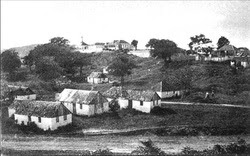History and Politics of Antigua
Antigua was earliest settled dating back to 2400
B.C. by antiquated hunter-gather Amerindians known as the Ciboney (meaning
"stone people"). After the Ciboney had migrated elsewhere, an
agricultural group called Arawaks resettled the land around 35-1100 A.D. but
they were eventually displaced by the Caribs. The first European contact with
Antigua generated when Christopher Columbus discovered the island amidst his
second voyage in 1493 and named it after Santa Maria la Antigua, the saint of
Seville. However, displeased with the lack of clean water and Carib resistance,
Columbus voyaged onwards and, so, it was not until 1632 that Antigua was
settled by the English. In 1684, Sir Christopher Codrington approached the
islet in hopes of chartering the land for large-scale sugar production, noting
that it proved successful elsewhere in the Caribbean. Codrington's efforts
flourished and, by the mid eighteenth century, Antigua cultivated over 150
plantations including Betty's Hope Sugar Plantation - the first large
plantation on Antigua built by Codrington himself and named for his daughter -
which still stands today as a completely restored sugar mill. Even now,
Antigua's distinguished sugar dependence causes a lack of diversity in the
economy and, as a result, most of the islands' food is imported from Britain.
Moreover, the enclave's infamous past of slavery explains the majority
Afro-Antiguan population of the island today as well as the Creole culture that
radiates throughout it. For example, although English is technically the
official language of the island, the vast majority speaks Antiguan Creole.
Additionally, Music in Antigua is largely forged by African culture as
reflected by the indispensable calypso and steel band characteristics of modern
popular tunes. The result of creolization is especially prominent in
Antigua's religious beliefs and practices where Christian denominations
coalesce with African influences, as presented in the methodology of worship
and even the music heard in church.
Under British rule, slavery controlled the economy therefore,
after its abolition in 1834, the economy endured a harsh recession, worsened by
a simultaneously occurring series of natural disasters. Although slavery was
technically eradicated, working conditions for the formerly enslaved peoples -
particularly those under sugar plantation owners - were cruel nonetheless.
These horrid circumstances inspired an array of revolts in the early 1900s
which prompted the formation of the Antigua Trades Labor Union (ATLU). Furthermore,
the involvement of the ATLU combined with its underlying political initiative
elicited the Antigua Labor Party, led by Vere Cornwall Bird Senior. Antigua was
originally part of the Leeward Islands Colony but, after its defederation in
1956, the archipelago sought refuge with the West Indies Federation during its
brief existence from 1958 until 1962. Afterwards, the island became a status of
association with the Commonwealth. When Antigua finally gained independence on
November 1st, 1981, V.C. Bird became the nation's first prime minister. In
1994, Sir Vere Cornwall Bird Sr.'s son, Lester Bird Junior, succeeded him as
Prime Minister, allowing the Bird family to remain in power over the next
twenty years, thus marking their legacy a significant aspect of Antigua's
history.
By the end of the eighteenth century, Antigua had transformed into a valuable commercial colony as well as a crucial strategic port, known as the "gateway to the Caribbean." Most of Antigua's historical sites, specifically the architecture of English Harbortown and Shirley Heights, serve as a remembrance of the British Navy's base and observation post during colonial times. Visitors today can tour Dow Hill's Interpretation Center (located near Shirley Heights) to view a remarkable presentation of the island's thorough history. Likewise, guests can explore St. John (the capital of Antigua) and tour the Museum of Antigua and Barbuda to learn about the archipelago's antiquity. Also based in St. John is the grand St. John's Cathedral, a historical landmark first built in 1683 and last rebuilt in 1845. Overall, Antigua's rich history is protuberant amidst the island. From its vibrant culture to its breathtaking landmarks, Antigua remains one of the most magnificently distinct destinations in the world.
Sources
“Antigua.” The Virtual Caribbean Library,
ggccaribbean.wpengine.com/listing/antigua-and-barbuda/.
Antigua and Barbuda / Exploring Antigua and
Barbuda,
www.antigua-barbuda.org/Agpnt01.htm.
“Antigua and Barbuda History.” The
History of Antigua and Barbuda in Writings, Photographs, and Stories,
antiguahistory.net/index.html.
“History of Antigua and Barbuda.” Wikipedia,
Wikimedia Foundation, 19 Feb. 2021,
en.wikipedia.org/wiki/History_of_Antigua_and_Barbuda.
“Politics of Antigua and Barbuda.” Wikipedia, Wikimedia Foundation, 28 Feb. 2021, en.wikipedia.org/wiki/Politics_of_Antigua_and_Barbuda.



Comments
Post a Comment